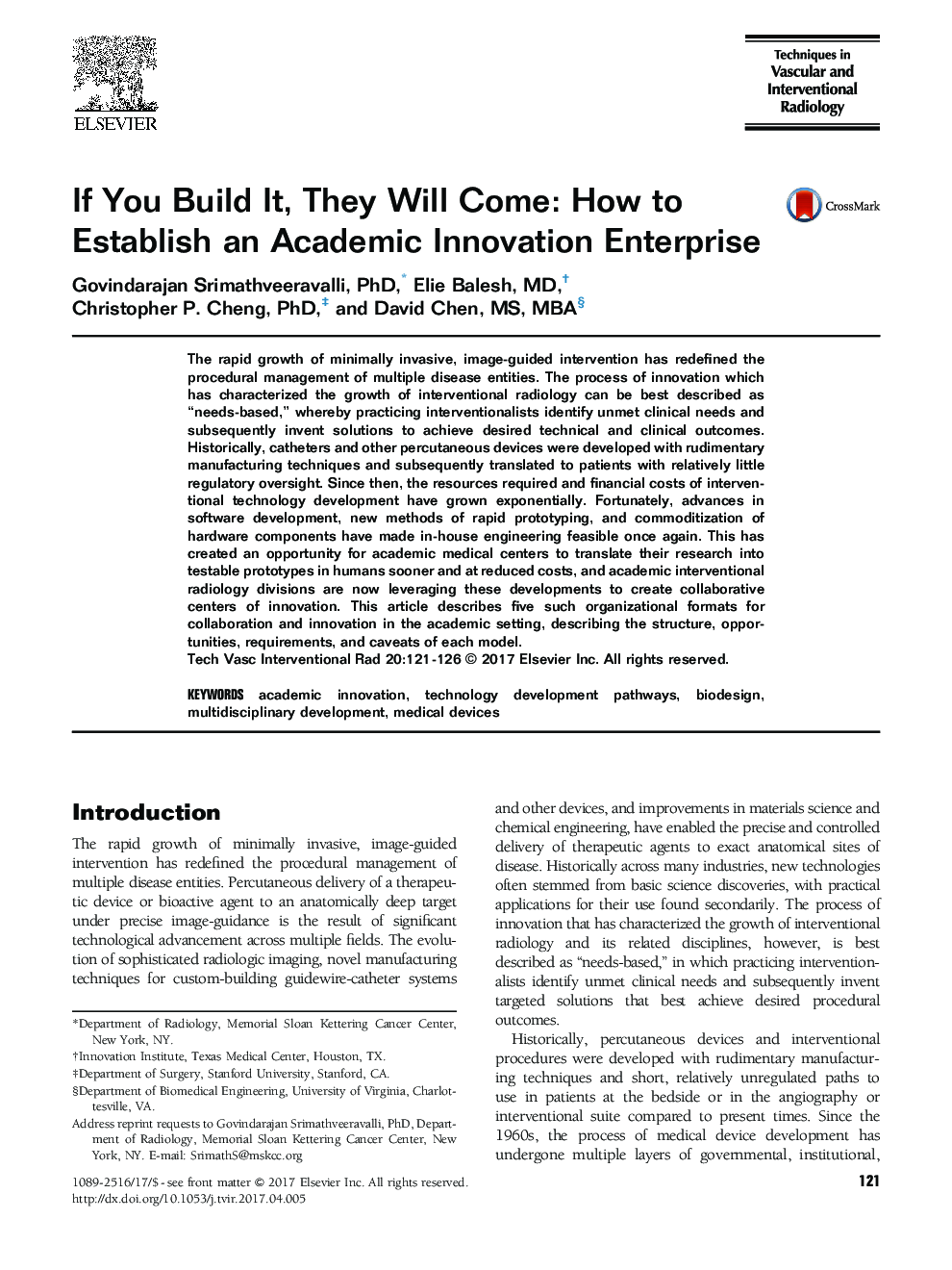| Article ID | Journal | Published Year | Pages | File Type |
|---|---|---|---|---|
| 5728416 | Techniques in Vascular and Interventional Radiology | 2017 | 6 Pages |
The rapid growth of minimally invasive, image-guided intervention has redefined the procedural management of multiple disease entities. The process of innovation which has characterized the growth of interventional radiology can be best described as “needs-based,” whereby practicing interventionalists identify unmet clinical needs and subsequently invent solutions to achieve desired technical and clinical outcomes. Historically, catheters and other percutaneous devices were developed with rudimentary manufacturing techniques and subsequently translated to patients with relatively little regulatory oversight. Since then, the resources required and financial costs of interventional technology development have grown exponentially. Fortunately, advances in software development, new methods of rapid prototyping, and commoditization of hardware components have made in-house engineering feasible once again. This has created an opportunity for academic medical centers to translate their research into testable prototypes in humans sooner and at reduced costs, and academic interventional radiology divisions are now leveraging these developments to create collaborative centers of innovation. This article describes five such organizational formats for collaboration and innovation in the academic setting, describing the structure, opportunities, requirements, and caveats of each model.
